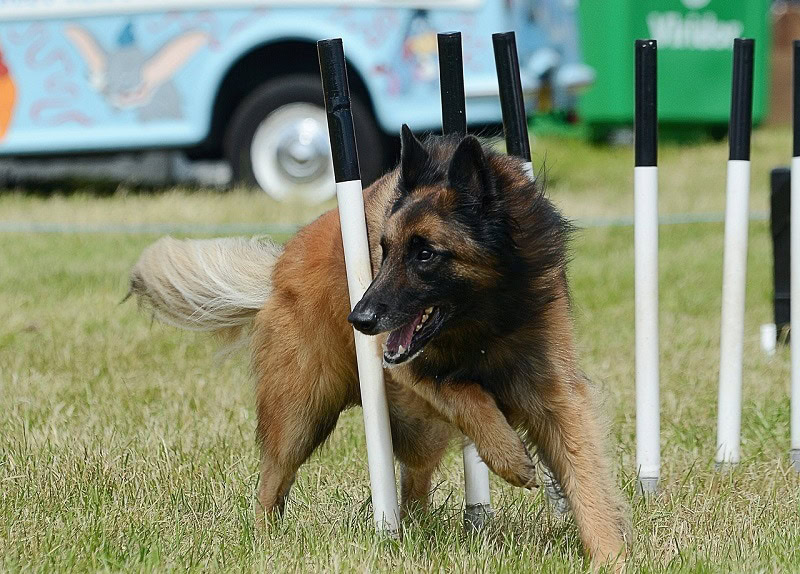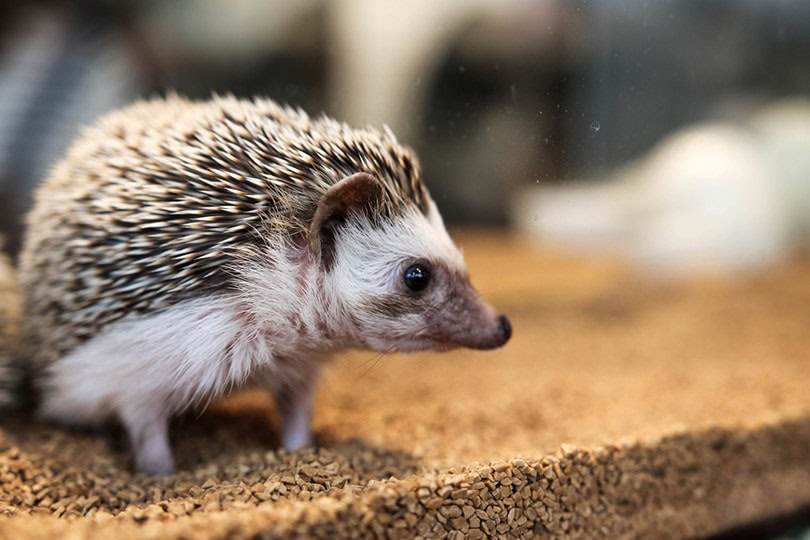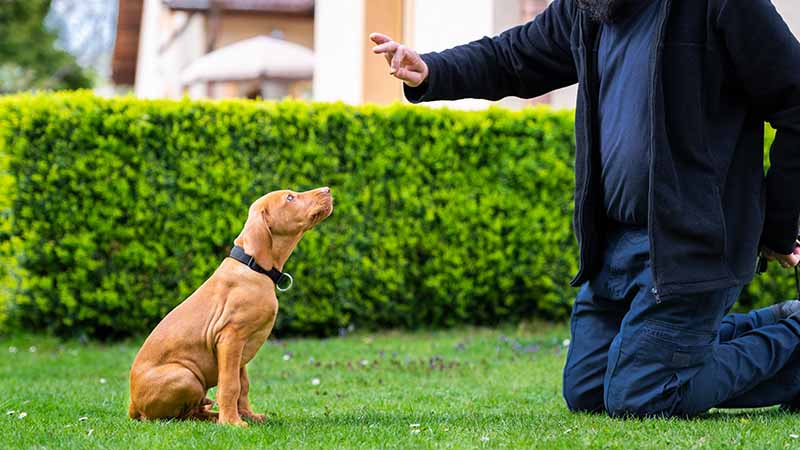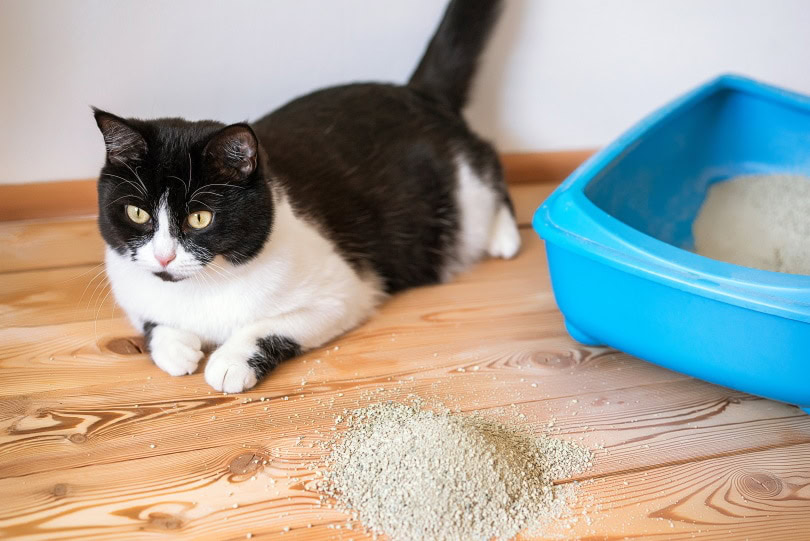VET APPROVED

The information is current and up-to-date in accordance with the latest veterinarian research.
Learn more »Click to Skip Ahead
If your dog has a lot of energy, one of the best ways to keep it happy, healthy, and calm is to participate in dog agility training. Agility training involves leading your dog through an obstacle course using your commands. It requires a lot of attention and motivation on your dog’s part, but a lot of patience on yours.
Getting started in dog agility training can be difficult for a beginner. If you’ve never trained a dog in agility sports before, it certainly can be a daunting task. That does not mean you should shy away from the exercise, though.
To make dog agility training a bit easier for you, we have developed this complete guide. This guide will talk about agility training, how to get started, and more. Read on to find out everything you need to know about dog agility training.

Dog Agility Training: What Is It?
As mentioned, dog agility training involves directing your dog through an obstacle course using voice commands. Most courses will have between 14 and 20 obstacles, including tunnels, tire jumps, and seesaws. Your dog must go through this obstacle course by relying on your cues and body language.
All breeds, even mixed breeds, can participate in agility sports, but certain dogs are better at it than others. For example, Australian Shepherds tend to excel at agility training, but your dog may be great at it, too.
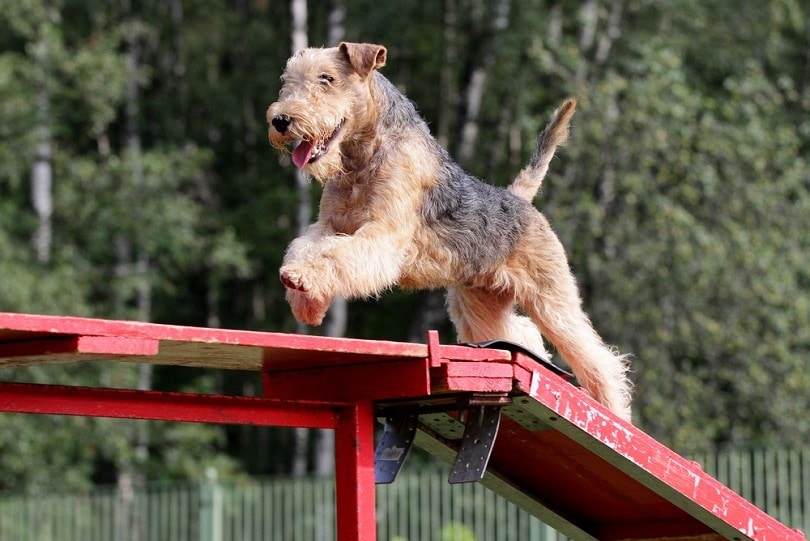
Benefits
The benefits of agility training are outstanding. Most notably, agility training is your dog’s mental and physical exercise. The obstacles require your dog to push its body while stimulating its brain. It can help your dog stay in peak condition for many years to come.
Additionally, agility training is great for dogs with a lot of energy. Because training requires a lot of exercise, it can relax rowdy dogs since they have to put out so much energy during practice. Of course, you will have to exercise your dog frequently through agility training to get this benefit.
The last major benefit of agility training is the bond between you and your dog will be strengthened. As we’ve already mentioned several times now, the dogs are led by your voice. During the training process, your dog will become more bonded to you and learn to listen to you even better.
Is It Right for You?
Now that you know what agility training is, you might be wondering if it is right for you. There are a lot of misconceptions about the requirements and the type of people who participate in agility training. To put it bluntly, you only need a lot of passion and patience to train a dog in agility sports.
You do not need to be a great athlete. In fact, some impressive agility sports trainers are in wheelchairs. This proves nothing stops you from becoming an agility sports trainer with your dog—as long as you’re patient and willing to do the work.
Any dog can participate in agility sports as well. Some dogs will naturally be better at it than others, but agility sports can be a great way to exercise any dog you may have. This includes purebreds and mixed breeds alike.

Staying Healthy During Agility Training
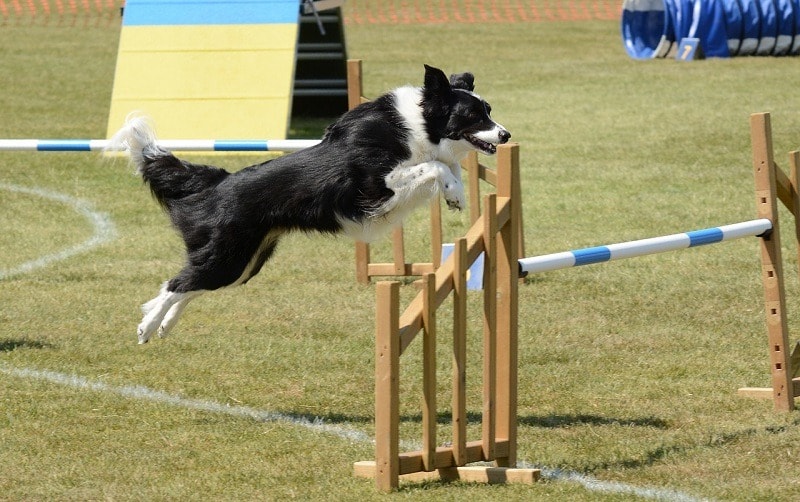
Agility training can be a lot of hard work and put a lot of strain on your and your dog’s bodies. Both you and your dog must stay healthy throughout the training phases. Initially, go slow, and don’t push yourself or your dog beyond the limits.
It’s a great idea to talk to your doctor and your dog’s vet before participating in agility training. If you and your dog get a full physical, you can learn about any issues that may become apparent based on the health conditions. Only get into agility sports if your doctor and vet approve. For example, high jumps such as bar obstacles might not be ideal for overweight dogs as they would put a lot of strain on their joints. Your vet might put the dog on a diet and recommend starting only with the tunnels, tables, and weaves, till your pup sheds some pounds.
After getting the approval you need, still be smart about the training. Provide your dog with a lot of water, especially during summer. Pay attention to your dog’s body language and take it to the vet if it shows signs of pain.
How to Get Started With Dog Agility Training
If you are sold on agility sports, let’s get right into what you need to do to get started. Obedience training is a prerequisite for agility training, as your dog will learn to be attentive to you and follow cues. It’s a great idea to start by attending a class or training opportunity if you have never done training or agility training before. It can be really difficult to get started if both you and your dog are clueless.
Once again, we recommend starting with some sort of training course. The instructor will give you advice on the different rules and how to get a dog to do something that seems complex. They have a series of tried and proven methods broken down into small, easy-to-achieve steps.
Stay Positive
During these early stages, stay optimistic. It may be a bit stressful because your dog does not know the commands yet. Nevertheless, stay optimistic and keep it fun. If you are fun and happy to be there, your dog will be too. Similarly, your dog will start picking up on the commands more quickly if you aren’t creating a more stressful environment.

How to Do Dog Agility Training at Home
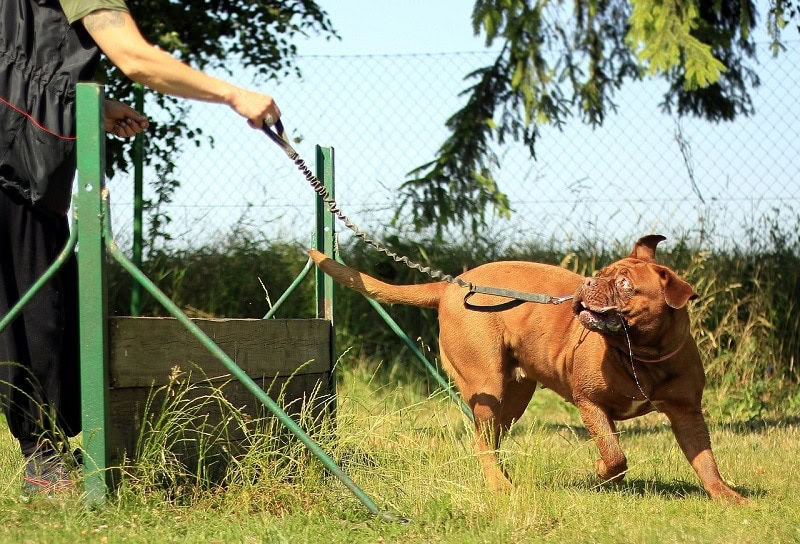
As you start training your dog, you might want to start training at home. Just as with any other sport, practice makes perfect. Practicing at home allows you to practice daily with your dog, even if the training course is only once a week.
Set Up Your Obstacle Course
When you first start training at home, you will need to get the necessary tools to set up the obstacle course. Most obstacle courses include jumps, tunnels, weave poles, and pause tables. It’s important to have either serious tools or makeshift ones.
If you look online for agility training tools, you will likely find that they are really expensive. You might want to invest in these tools to compete in agility sports. If you don’t have the money, you can make a makeshift obstacle course instead. It doesn’t matter what the obstacle course looks like if the dog is learning the motions and following your cues.
Jumps
One of the most basic parts of agility training is teaching your dog jumps. Begin with a low jump so your dog can get the hang of the course. You must also begin by teaching your dog to jump on a leash. This will prevent the dog from simply going around the hurdle.
As your dog is learning the jumps, make sure to give it a lot of treats. Start to raise the height of the hurdles as your dog gains confidence and skills. In the case that your dog is afraid to jump, place the hurdles in a narrow hallway so they cannot go around them. This will show your dog that it can jump over the hurdles without hurting itself.
Tunnels
Tunnels are something else that you have to teach your dog how to go through. Begin with short tunnels so that your dog can see through. It will likely be helpful to have another person at the end of the tunnel with some sort of treat or toy. You can even put treats inside the tunnel to lure the dog through it.
As your dog gets brave, you can start having longer tunnels and curved tunnels. Once again, placing treats and toys in the tunnel can be a great way to get the dog inside.
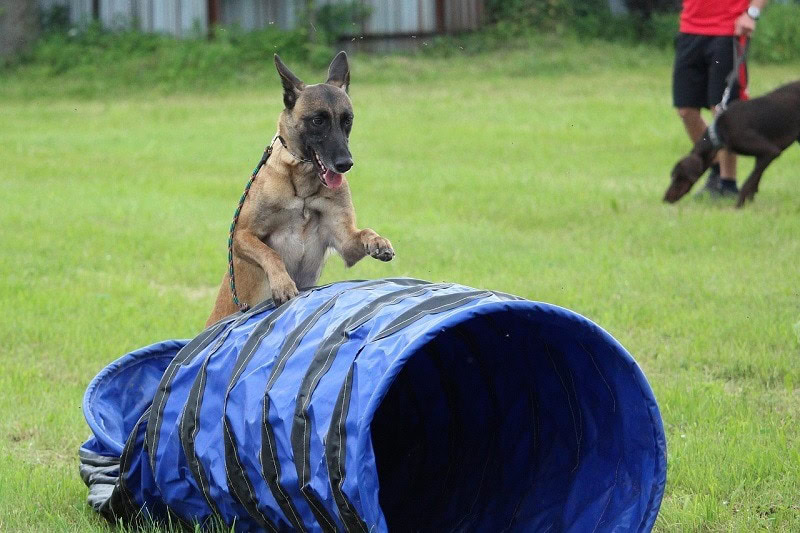
Weave Poles
Weave poles are another part of agility obstacle courses that your dog is basically guaranteed to come in contact with. Weave poles are much more difficult to teach than jumping and tunnels. It takes a lot of practice and repetition.
Stagger the poles so that they are easy for your dog to get through. Lead your dog through the poles on a leash so that it understands the motion. You will need to do this quite a few times before moving the poles closer together. It can take several weeks to fully teach your dog this skill.
Pause Table
Probably the most difficult part of an agility obstacle course is the pause table. Pause tables are typically the height of a couch, but they require your dog to sit still. Even dogs that are good at sitting find it difficult to stay at an obstacle’s pause table because they want to go onto the next obstacle.
This is something that will require a lot of patience. Your dog will likely understand the motion, but you’ll have to teach it to actually stay. This is why obedience training needs to be the basis. Start by teaching your dog to stay for five seconds. Once your dog can do that, introduce distractions to keep it sitting no matter what.
Sequencing
Finally, the last step in your home training should be sequencing. Sequencing is when you put all of the obstacles together into an obstacle course. This tells your dog which obstacle it should do in what order. Begin by linking two obstacles. Then, start adding more. You need to learn when to give the commands, or else the dog may choose the next obstacle for you.
Sequencing requires a learning curve for both you and your dog. Your dog must learn how to connect the obstacles, but you must learn when to give the commands.
During the sequencing phase, you might want to introduce your dog to different training locations, as well as changing the sequence order. This will keep your dog focused on your commands even when you aren’t at home. This may be a bit stressful at first, but it is the only way to ensure your dog won’t get distracted come competition day.
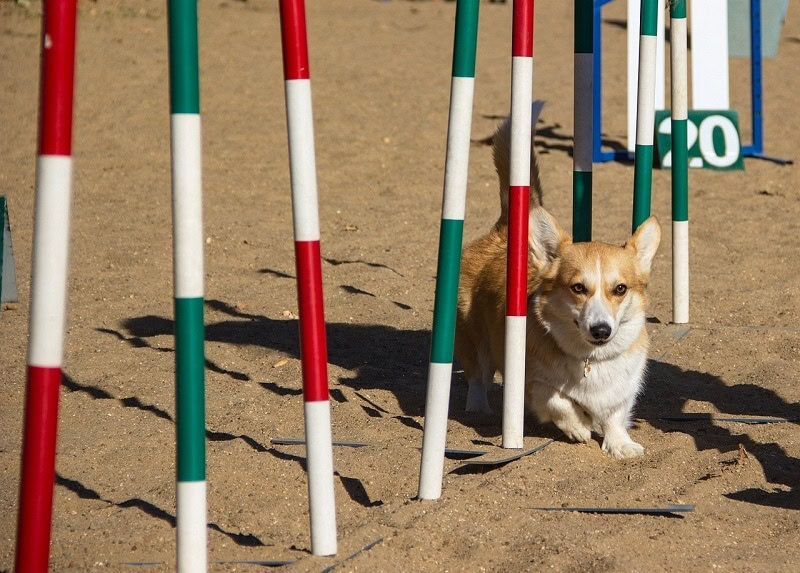
Compete
Depending on what you want to get out of agility training, you can either do agility training with your dog for fun or for sport. Agility training can be a way to exercise your dog and relieve some of its energy. If your dog gets really good at agility training, though, you can begin competing in tournaments.
Several organizations oversee agility sports, like the USDAA, NADAC, and AKCA. If you think you want to do agility more seriously, you can look into these organizations to find training programs and tournaments to put on your calendar.

Final Thoughts
Agility training is a great way to keep your dog active and exercised. It can be a little bit difficult to get started, though. Follow this guide to learn the basics of agility training. With a lot of patience and hard work, you and your dog can be on your way to agility sport competitions in no time!
Featured Image: SnottyBoggins, Pixabay
